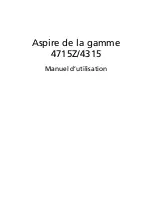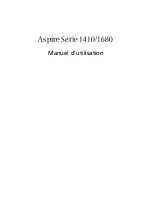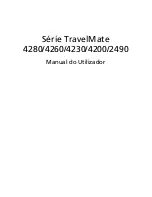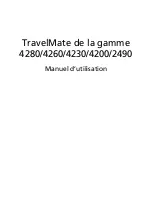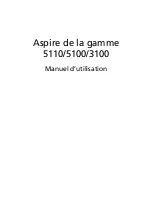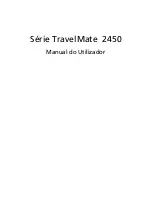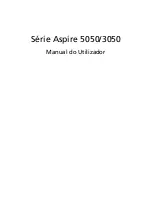
Suspend Mode: This item allows you to set the type of suspend mode to
be used by the system when it suspends (due to a timeout or when the sus-
pend mode is activated by the user). The options are:
Disabled: Prevents the system from entering the suspend mode.
DRAM: Removes power to all components except DRAM. Allows for
a quick restart.
Disk: Removes power from all components and writes the session to a
partition of the hard drive.
Auto: First enters DRAM mode, then enters the Disk mode after the
time specified below.
(Note: This field might be display-only, depending on the setting selected
in the Power Savings Mode above.)
Suspend Timeout: The amount of idle time that must pass before the sys-
tem automatically Suspends functioning. This item can be “disabled” or set
to a specific time increment. (Note: This field might be display-only,
depending on the setting selected in the Power Savings Mode above.)
RAM to Disk Timeout: If the “Auto” suspend mode has been chosen, this
setting determines how long the system will suspend to DRAM before sus-
pending to disk. (Note: This field might be display-only, depending on the
setting selected in the Power Savings Mode above.)
Suspend on Low Battery: When this function is enabled, the system will
automatically enter the suspend mode when the battery reaches a critical
level. This can help avoid inadvertent loss of data in an unattended system.
If you rarely leave the system running on battery power while unattended,
you might prefer to disable this setting. When the setting is disabled, the
system will continue to run until battery power is completely used up. This
can allow you to save your work or shut down the system after receiving
8.12
User’s Manual
Autosave functions (or
other automatic functions,
such as email checking) in
programs can reset the timeouts
for your system. If you want the
system to time out after a specific
period of inactivity, make certain
that automatic functions are dis-
abled or set with a longer time
period than the system timeouts.
Содержание XL2
Страница 1: ...User s Manual for notebook computers ...
Страница 6: ...Table of Contents 6 Table of Contents ...
Страница 11: ...Preface v ...
Страница 13: ...Chapter One Getting Started Chapter 1 Getting Started 1 1 ...
Страница 40: ...Chapter Two Basic Computing Chapter 2 Basic Computing 2 1 ...
Страница 60: ...Chapter Three Mobile Computing Chapter 3 Mobile Computing 3 1 ...
Страница 80: ...Chapter Four Desktop Operation Chapter 4 Desktop Operation 4 1 ...
Страница 98: ...Chapter 4 Desktop Operation 4 19 ...
Страница 99: ...Chapter Five PC Cards PCMCIA Chapter 5 PC Cards PCMCIA 5 1 ...
Страница 113: ...Chapter Six Video Settings Chapter 6 Video Settings 6 1 ...
Страница 123: ...Chapter Seven Upgrading Chapter 7 Upgrading 7 1 ...
Страница 135: ...7 13 Chapter 7 Upgrading ...
Страница 136: ...Chapter Eight Configuring Maintaining Your System Chapter 8 Configuring Maintaining Your System 8 1 ...
Страница 160: ...Chapter Nine Troubleshooting Chapter 9 Troubleshooting 9 1 ...
Страница 187: ...Glossary Glossary G 1 ...
Страница 204: ...Index Index I 1 ...
Страница 211: ...WinBook Corporation 2701 Charter Street Hilliard Ohio 43228 ...































